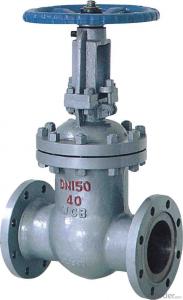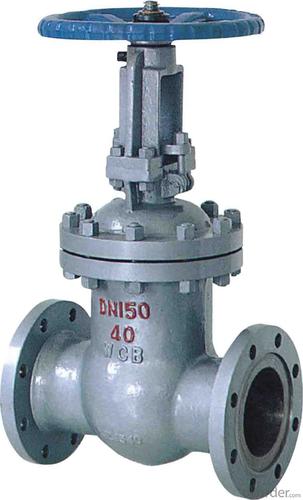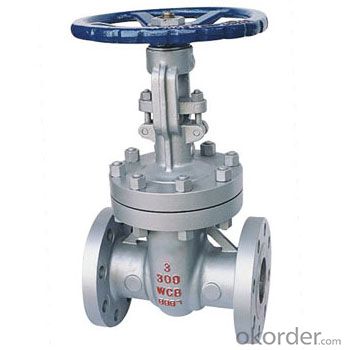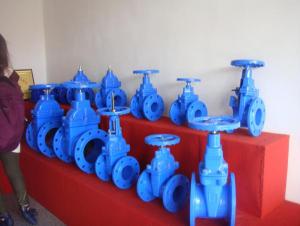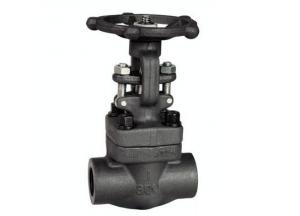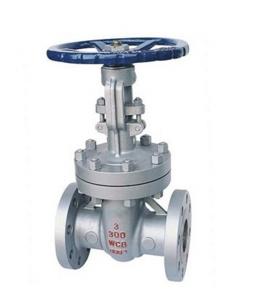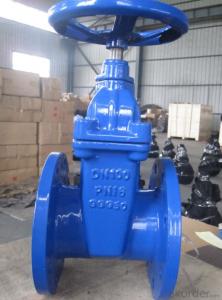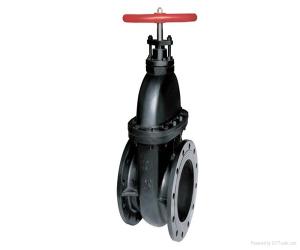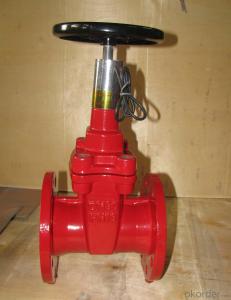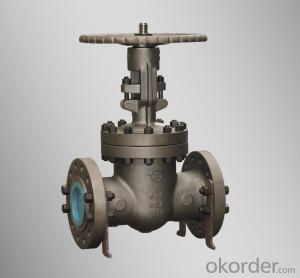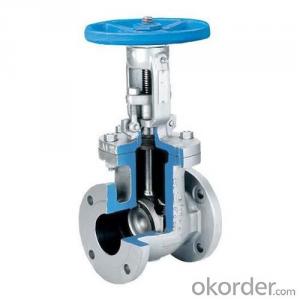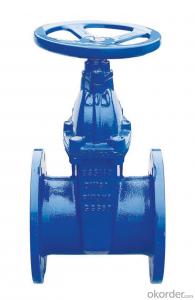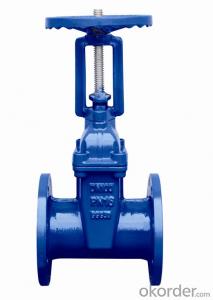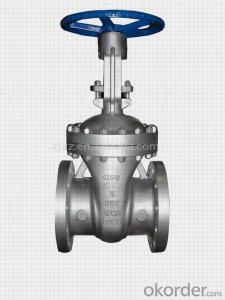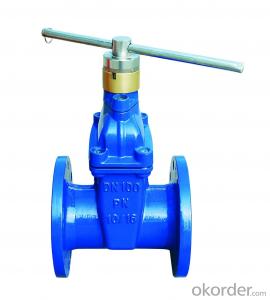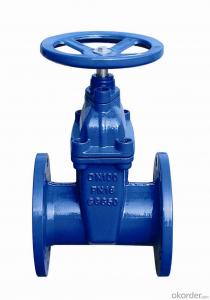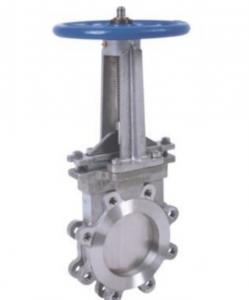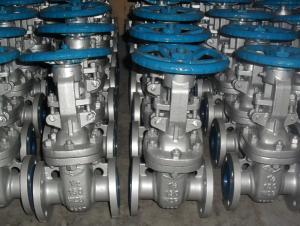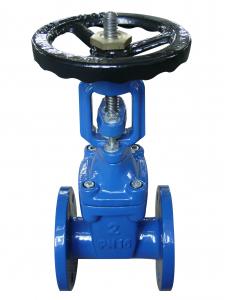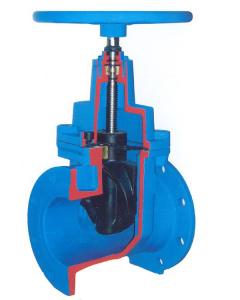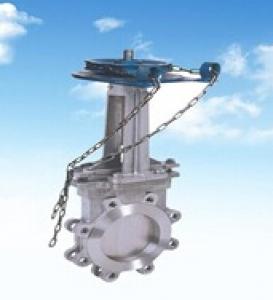Gate Valve DN350 Non-rising BS5163 Resilient Good Quality
- Loading Port:
- Tianjin
- Payment Terms:
- TT OR LC
- Min Order Qty:
- 50 pc
- Supply Capability:
- 5000 pc/month
OKorder Service Pledge
OKorder Financial Service
You Might Also Like
1.Structure of Gate Valve Description:
A gate valve, also known as a sluice valve, is a valve that opens by lifting a round or rectangular gate/wedge out of the path of the fluid. The distinct feature of a gate valve is the sealing surfaces between the gate and seats are planar, so gate valves are often used when a straight-line flow of fluid and minimum restriction is desired. The gate faces can form a wedge shape or they can be parallel. Gate valves are primarily used to permit or prevent the flow of liquids, but typical gate valves shouldn't be used for regulating flow, unless they are specifically designed for that purpose. Because of their ability to cut through liquids, gate valves are often used in the petroleum industry. For extremely thick fluids, a specialty valve often known as a knife valve is used to cut through the liquid. On opening the gate valve, the flow path is enlarged in a highly nonlinear manner with respect to percent of opening. This means that flow rate does not change evenly with stem travel. Also, a partially open gate disk tends to vibrate from the fluid flow. Most of the flow change occurs near shutoff with a relatively high fluid velocity causing disk and seat wear and eventual leakage if used to regulate flow. Typical gate valves are designed to be fully opened or closed.When fully open, the typical gate valve has no obstruction in the flow path, resulting in very low friction loss.
2. Main Features of the Gate Valve:
• Valve body cavity using non-toxic epoxy resin,both inside and outside flashboard completely is coated with rubber
• Free of water pollution
• High manufacturing accuracy
• High strength
• Environmental protection and energy saving
• Good visual effect
3. Images
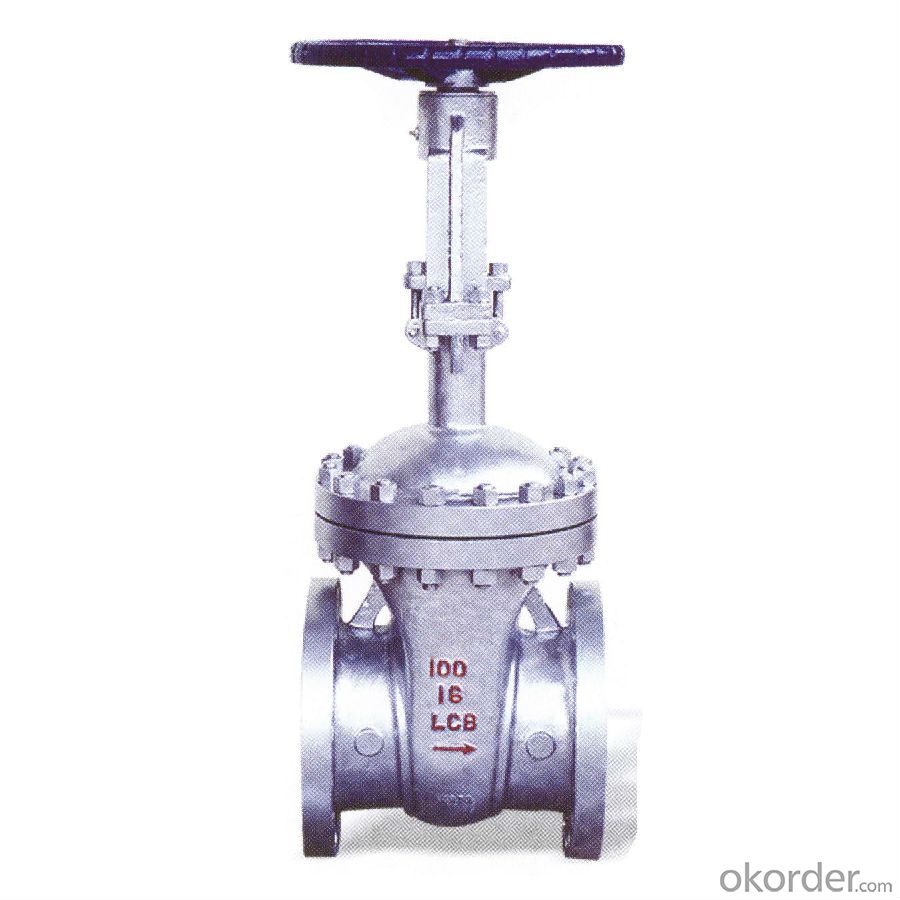
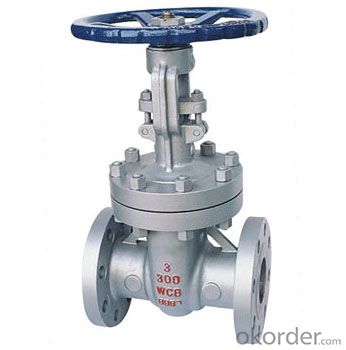
4. Gate valve Specification
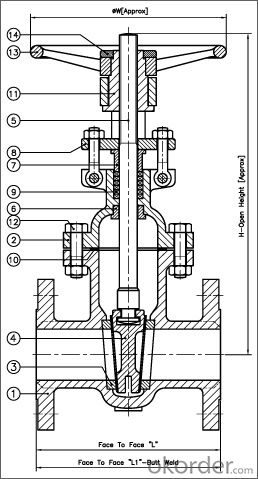
5.FAQ
1. What's are the characteristics of gate valve?
The distinct feature of a gate valve is the sealing surfaces between the gate and seats are planar, so gate valves are often used when a straight-line flow of fluid and minimum restriction is desired. The gate faces can form a wedge shape or they can be parallel.
2. What is the work principle of gate valve ?
The gate faces can form a wedge shape or they can be parallel. Gate valves are primarily used to permit or prevent the flow of liquids, but typical gate valves shouldn't be used for regulating flow, unless they are specifically designed for that purpose. Because of their ability to cut through liquids, gate valves are often used in the petroleum industry.
3. What is the structure?
Bonnets provide leakproof closure for the valve body. Gate valves may have a screw-in, union, or bolted bonnet. Screw-in bonnet is the simplest, offering a durable, pressure-tight seal. Union bonnet is suitable for applications requiring frequent inspection and cleaning. It also gives the body added strength. Bolted bonnet is used for larger valves and higher pressure applications.
- Q: what are their applicable conditions? Advantages and disadvantages?
- The gate valve is one of the simplest valves. Generally manual, most of the electric valve failure, as a manual. Butterfly valve is more, I saw the pneumatic butterfly valve, that is, with gas control closed, general and solenoid valve matching.Without strict conditions and advantages and disadvantages, of course, the equipment requires a relatively high degree of automatic control. I can check it out on Baidu.
- Q: What is the difference between the model z81x-16q and z81x-16c of the groove gate valve?
- Not 16qIs 16p, the former body is stainless steel, and the latter body is carbon steel
- Q: The difference between flanged gate valve and common gate valve
- Flange gate valve and ordinary gate valve difference is that the flange gate valve of good quality, durable and easy to install, but the price is a little high, generally used for large pipelines. Common, also available, such as small caliber, easy to change places.
- Q: Function of signal butterfly valve and gate valve
- The signal butterfly valve applies to petroleum, chemical, food, medicine, papermaking, water and electricity, ships, water supply and drainage, smelting, energy and other system pipelines. It can be used as regulating and throttling devices in a variety of corrosive, non corrosive gases, liquids, semi fluids, and solid powder pipelines and containers. It is widely used in high buildings, fire protection systems and other piping systems that need to display valve switching status.
- Q: What are the meaning of the cast rigid gate valves z41h-16c?
- According to the provisions of the JB/T 308-2004 valve type programming method:Z== gate valve4== flange connection1== rigid single gateH== sealing surface material: Cr13 stainless steel16== pressure rating: 1.6MPaC== body material: carbon steel
- Q: Why the valve can only be fully open and fully closed valve can adjust the flow?
- Valve, if adjusted, it is easy to wash the sealing surface, resulting in sealing surface damage.
- Q: What are the common standards for gate valves?
- Is the gate valve opening and closing parts, RAM direction of motion perpendicular to the direction of the fluid, valve can only be fully open and fully closed, can not be adjusted and the throttle. The following common standards for Fujian Biaoguang valve for valve: design specification: JB/T 7746, API602 JB/T 7746, the length of the structure specification / thread socket factory test and inspection of JB/T1751/GB7306, ANSI: B16.11/B2.1: JB/T 9092, API598 pressure temperature: GB/T 9131, ANSI B16.34, MSS GB/T 12220 product ID: SP25 delivery specification: JB/T 7928
- Q: What is the size and length of the DN80 gate valve? 10 kg and 16 kg, respectively?
- Valve structure length standards are PN16, short series for 203mm, long series for 280mm, flange size by PN16.
- Q: Gate valve z41t what does that mean?
- According to the provisions of the JB/T 308-2004 valve type programming method:Z = gate valve4 = connection form: flangeT = sealing surface material: copper alloy
- Q: Why does the centrifugal pump start and stop in the case of closing the gate valve?
- After the valve is closed to stop the cause of centrifugal pump outlet valve is closed to stop the pump to prevent the flow back into the pump, impeller, impeller in reverse, part of the mechanical seal in the pump pump impeller reversal will have adverse consequences, serious damage to the centrifugal pump, to close the valve after the shutdown.
Send your message to us
Gate Valve DN350 Non-rising BS5163 Resilient Good Quality
- Loading Port:
- Tianjin
- Payment Terms:
- TT OR LC
- Min Order Qty:
- 50 pc
- Supply Capability:
- 5000 pc/month
OKorder Service Pledge
OKorder Financial Service
Similar products
Hot products
Hot Searches
